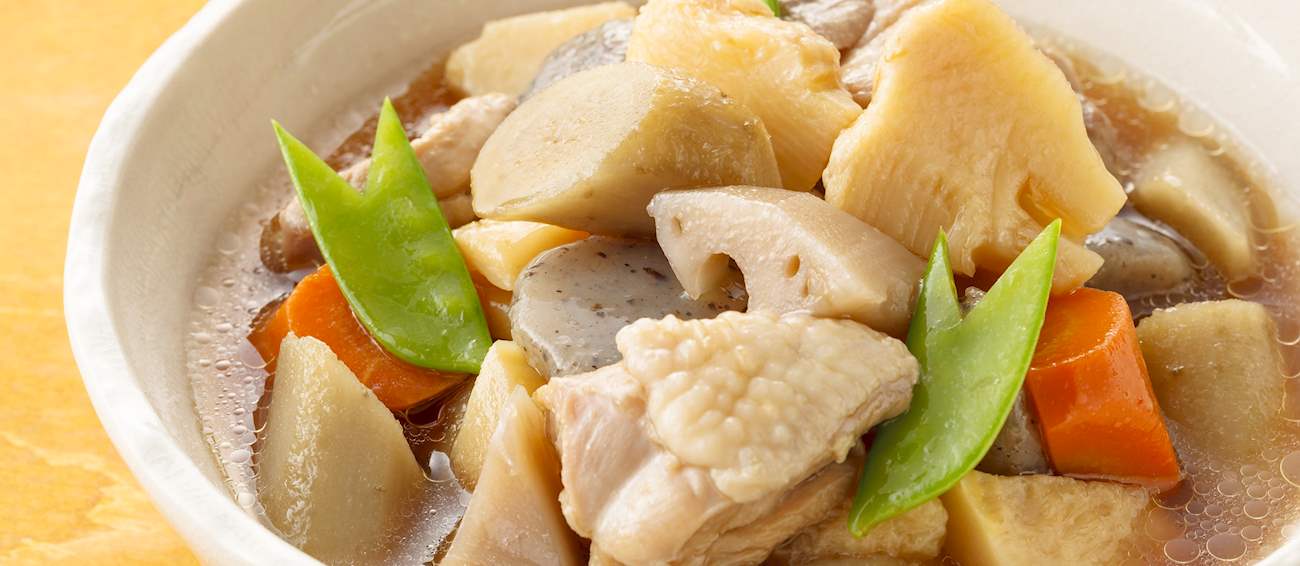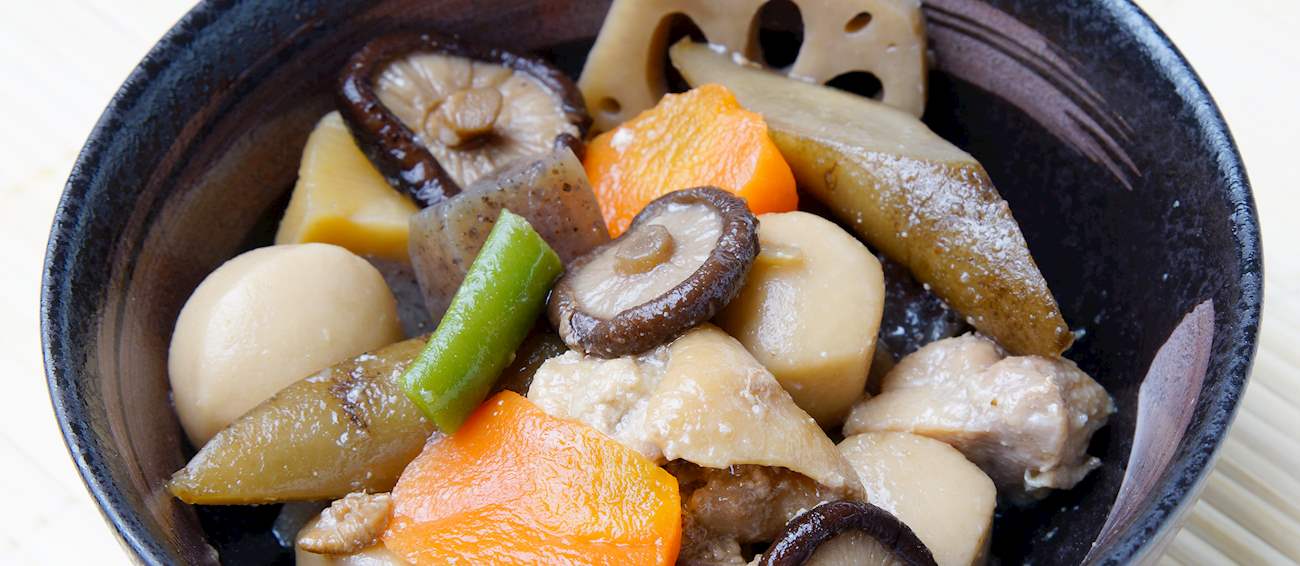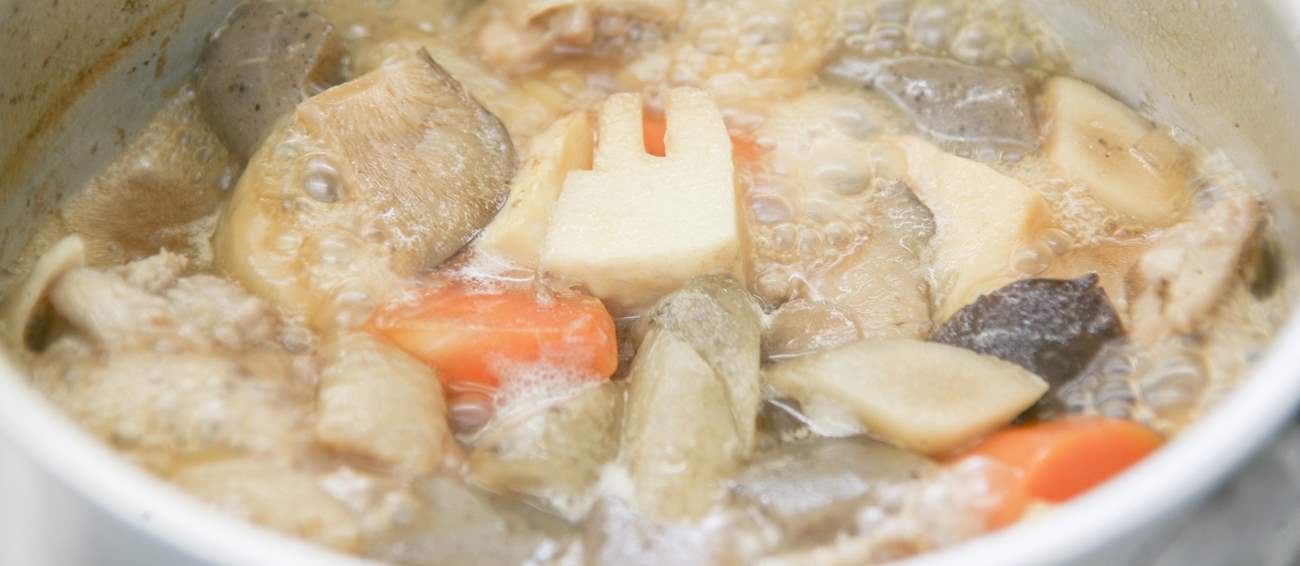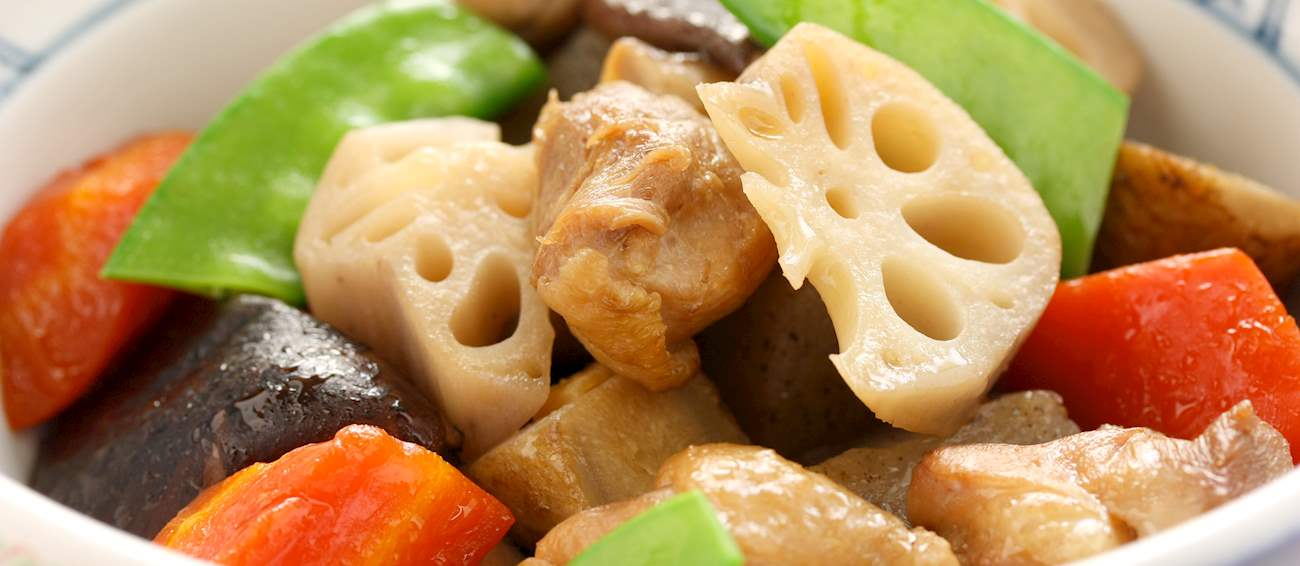Nimono
(煮物)
One of the basic cooking techniques in Japanese cuisine known as nimono refers to simmered foods which are traditionally a part of every meal except breakfast. Nimono is also the principal way of preparing and serving vegetables as well as one of the most popular ways of preparing fish.
Before simmering, base ingredients such as various vegetables, fish, seafood, or tofu are usually blanched or parboiled in water, and then cooked in shiru stock over a long period of time, until the liquid is almost fully absorbed or evaporated.
The shiru stock used for nimono is most often dashi, which can be slightly sweetened and flavored with sake and soy sauce, mirin, vinegar, miso, or other condiments. Depending on the combination of seasoning and the type of stock, there are several varieties of nimono dishes. Misoni or misodaki are typically used for fish or sometimes vegetables; simmered in a mixture of miso and dashi, flavored with soy sauce and freshly chopped ginger. Nitsuke is mainly used for simmering fish in a mixture of sake, soy sauce, and mirin or sugar. Shigureni refers to dishes simmered in dashi which was heavily seasoned with soy sauce, while karani uses only sake and soy sauce for simmering.
Some of the most famous nimono dishes include nizakana or nitsuke - fish poached in sweetened dashi, sometimes with the addition of miso; kakuni - chunks of pork belly stewed in soy, mirin, and sake with large pieces of daikon and whole boiled eggs; and oden - a classic Japanese winter dish consisting of boiled eggs, daikon radish, konjac root, and fishcakes stewed in a savory, soy-flavored dashi broth.
Types of Nimono
WHERE TO EAT The best Nimono in the world (according to food experts)

"It was so extremely delicious, plus since it was cold outside, nothing felt better than a piping hot flavorful soup."
"The food is cheerful and unsubtle. But where else can you sip your sake and watch your chanko nabe bubble, while the sound of massive flesh hitting hard-packed clay still seems to echo in the rafters."
"Here, you can savour the melt-in-the-mouth texture of Japanese beef in shabu-shabu dishes."
"Great nabe in a stylish restaurant."
"For aficionados, though, there is only one place that truly matters: Kawasaki is not just the oldest and proudest such establishment, many rate its nabe as the best in the neighborhood."
"I must say, the food is delicious. The room is very beautiful, mixing stone and wood. Oden is the specialty here. It is a fish-based broth in which various ingredients are cooked: konyaku, a kind of tuber gelatin, giusuji, made from beef tendon or gamodoki, made from mushrooms."
"This is a good place to sample sukiyaki. The quality of the meat here is very high, which is hardly surprising when you consider there is a butcher right downstairs."
"The meat was SUPER soft – it almost seemed to melt in your mouth. The flavor of the fat was rich, but it didn’t feel at all fatty in a bad way."
"Best Shabu-Shabu Restaurants in Tokyo: Rokkasen. You can enjoy shabu shabu, yakiniku, and a sukiyaki buffet."
"Heavenly delicious."




































